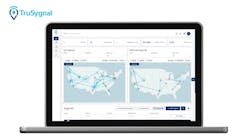Longtime Women in Trucking Association leader Ellen Voie turned over the reins to the organization she founded 16 years ago to advance gender diversity in the male-dominated transportation industry.
In 2007, the WIT held its first board meeting during a Truckload Carriers Association conference in Las Vegas. “The mission was to encourage the employment of women in the industry to address obstacles and to celebrate successes or tell stories—and the mission has never changed,” Voie told FleetOwner during the final day of the 2023 TCA conference outside Orlando, Florida.
See also: Women in Transportation 2022: Trailblazers in truckingJennifer Hedrick, who has 17 years of trade association leadership experience, officially took over as the second Women in Trucking president and CEO on March 16. With accreditation from the American Society of Association Executives, Hedrick led the National Industrial Transportation League for five years.
Voie and Hedrick sat down for a FleetOwner Pre-Trip talk about how the industry has changed since WIT was founded and where they see it going. Click the video at top of the page to watch.
Hedrick told FleetOwner she is looking forward to continuing the mission that WIT began years ago. That mission will continue at some upcoming industry events, including the Mid-American Trucking Show in Louisville later this month, when WIT will have a program saluting women of the industry and plans to give away a new truck. And Hedrick and others a WIT are busily preparing their trade group’s annual conference scheduled for November in Dallas.
See also: Pre-Trip: Breaking down trucking regs worth watching
Years ago, Voie recalled during a FleetOwner Pre-Trip interview on March 7, fleets became more interested in hiring women because of driver shortages. “One of the things that used to irritate me was they would say, ‘We need more drivers, let’s hire women.’ … We need women because they are wonderful and what they bring to the industry,” she said. “Women make up half the population. It was an untapped talent area—whether it’s in the C-suite or the safety directors, or dispatchers, or drivers, or technicians. It was an untapped market, and they were like, ‘Oh, we hadn’t thought about that.’
“Six years ago, they’d say we don’t care,” she continued. “Now, they’re coming to us and saying, ‘Help us hire more women. Help us understand.’”



